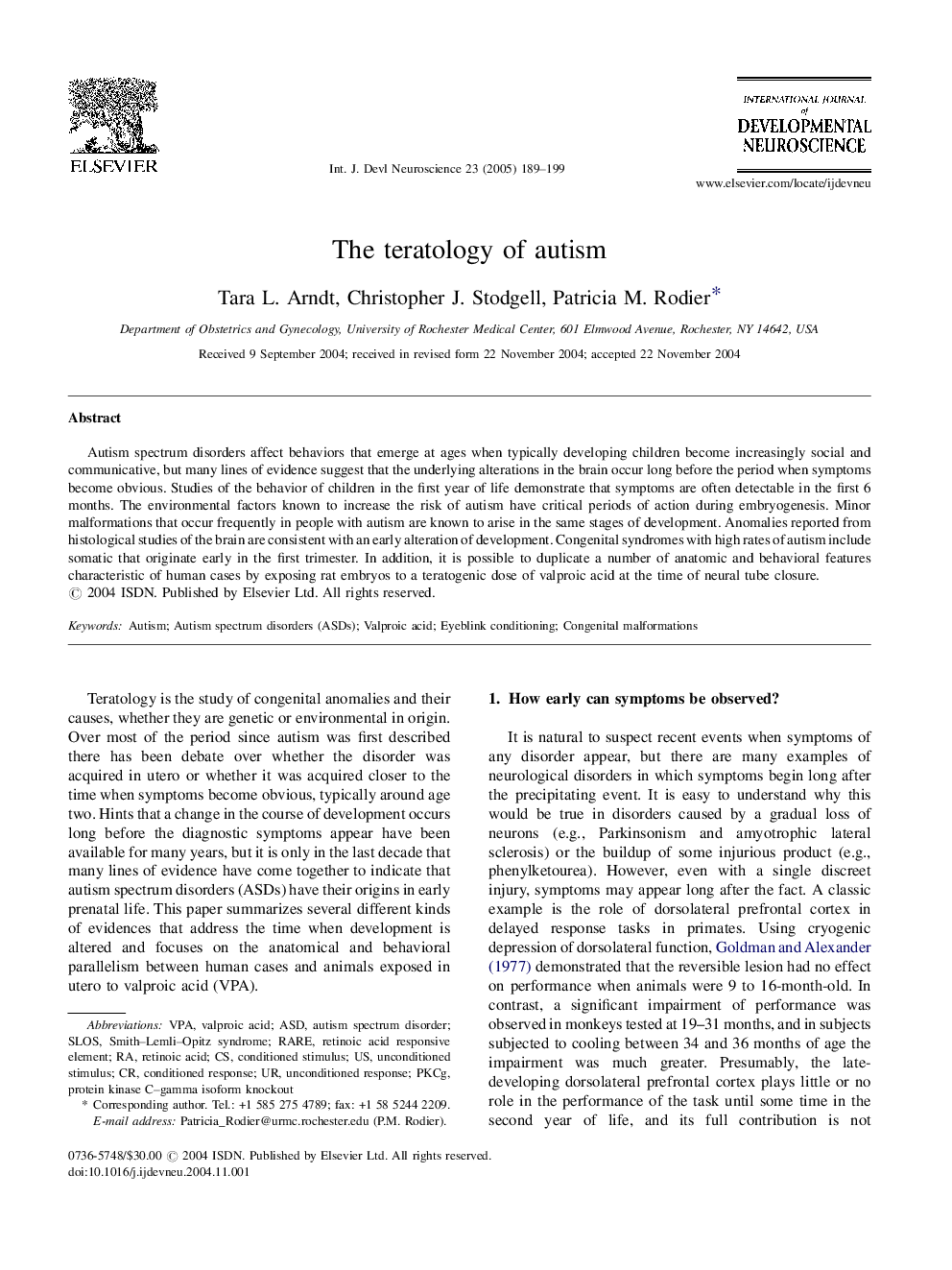| Article ID | Journal | Published Year | Pages | File Type |
|---|---|---|---|---|
| 9933600 | International Journal of Developmental Neuroscience | 2005 | 11 Pages |
Abstract
Autism spectrum disorders affect behaviors that emerge at ages when typically developing children become increasingly social and communicative, but many lines of evidence suggest that the underlying alterations in the brain occur long before the period when symptoms become obvious. Studies of the behavior of children in the first year of life demonstrate that symptoms are often detectable in the first 6 months. The environmental factors known to increase the risk of autism have critical periods of action during embryogenesis. Minor malformations that occur frequently in people with autism are known to arise in the same stages of development. Anomalies reported from histological studies of the brain are consistent with an early alteration of development. Congenital syndromes with high rates of autism include somatic that originate early in the first trimester. In addition, it is possible to duplicate a number of anatomic and behavioral features characteristic of human cases by exposing rat embryos to a teratogenic dose of valproic acid at the time of neural tube closure.
Keywords
Related Topics
Life Sciences
Biochemistry, Genetics and Molecular Biology
Developmental Biology
Authors
Tara L. Arndt, Christopher J. Stodgell, Patricia M. Rodier,
